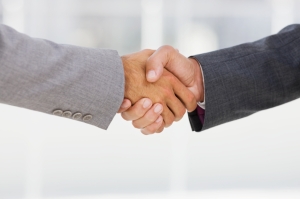Chopsticks or Silverware Part 2: Greeting and Business Card exchange etiquette in Asia
When in China, Hong Kong, Japan, Indonesia, Malaysia, Singapore, Vietnam, or South Korea, you can shake hands. Avoid direct eye contact during the handshake, and don’t shake very hard or very long.
The customary greeting is the bow. However, some Japanese may greet you with a handshake, albeit a weak one. Do not misinterpret a weak handshake as an indication of character. If you are greeted with a bow, return with a bow as low as the one you received. How low you bow determines the status of the relationship between you and the individual. Your host may bow to you. The more senior you are, the deeper the bow. You may also bow. The bow is a sign of mutual respect.When you bow keep your eyes low and your palms flat next to your thighs. The business card should be given after the bow. This is very important to remember.
Business Cards
The exchange of business cards must be made properly. Business cards should be printed in English on one side and in your host’s language on the other. In China, the card is often printed in black or gold ink. When you present your card, do so with both hands, native language side up and readable to your host. Remember to hold the corner of the business card so that your business logo and name are not covered. When you receive a card in return, study it , thank the person, and place the card gently in your jacket pocket (don’t stuff it in your pants pocket or wallet).
The following video demonstrates how to exchange business cards in Japan:
Please enter the url to a YouTube video.














